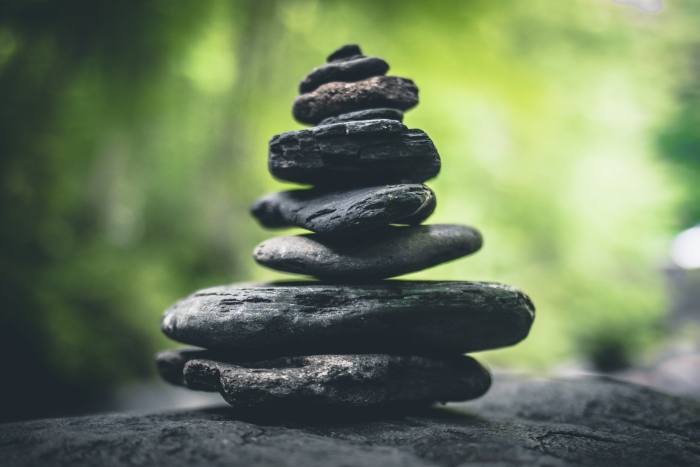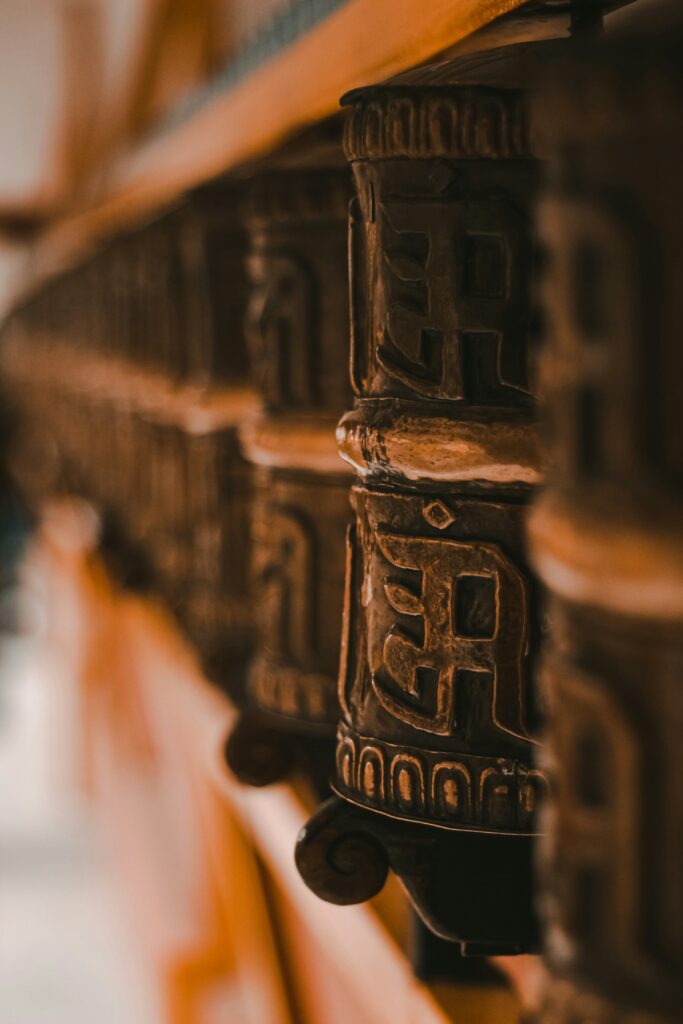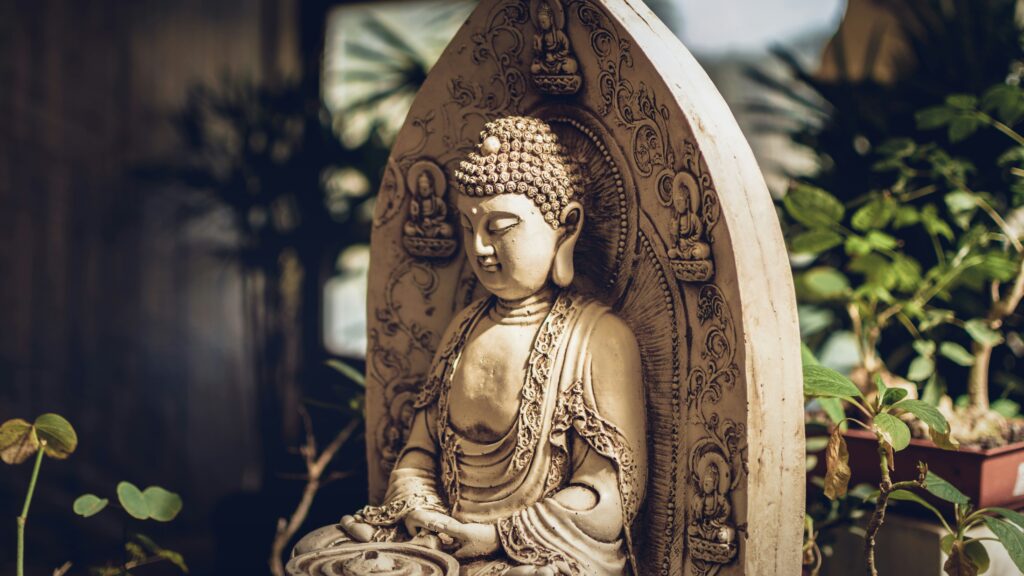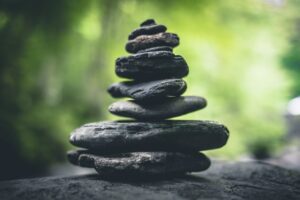Delving into the Depths of Zen Buddhism with 10 Zen Koans

In the serene panorama of Zen Buddhism, practitioners embark on a journey of self-discovery and enlightenment, guided by the enigmatic teachings of Zen masters. At the coronary heart of this transformative course are the Zen koans – dialogues, tales, questions, or paradoxical statements designed to propel people past conditioned thinking and into heightened awareness. Rooted in anecdotes from Zen masters, these Zen koans serve as gateways to profound insights. The period ‘koan’ itself, is derived from the Chinese phrase ‘kung-an,’ which means ‘public note’ or ‘public declaration,’ hints at the communal understanding encapsulated in those age-old teachings.
Understanding Zen Koans:
Zen koans are enigmatic expressions in Zen Buddhism, comprising dialogues, questions, or statements crafted to transcend conventional reasoning. Their motive is to propel practitioners beyond conceptual wondering, facilitating direct experiential insight. Koans defy honest interpretation, inviting contemplation that transcends the constraints of language and logic.
The Purpose of Koans:
- Foster direct experiential understanding.
- Transcend conditioned questioning.
- Propel practitioners closer to enlightenment.
- Challenge dualistic and conceptual modes of thought.
- Cultivate heightened states of recognition.
Koans and Anecdotes:
- Anecdotes provide historical and cultural context.
- Capture the residing know-how of Zen masters.
- Convey teachings through non-verbal dimensions.
- Serve as bridges between subculture and personal revel in.
The Vast Array of Koans:
- Offer various views on truth.
- Accommodate practitioners at various ranges.
- Personalized exploration is based totally on temperament.
- Range from simplicity to profound complexity.
Challenges and Rewards of Koan Practice:
Challenges:

- Intellectual Struggle: Koans often defy conventional reasoning, leading to intellectual challenges for practitioners.
- Breaking Habitual Thought Patterns: Koan’s intention to interrupt unfastened from conditioned wandering, requires practitioners to desert familiar thought styles.
- The Quest for Certainty: Choosing clear answers can be a sizable challenge, as koans frequently embrace ambiguity and uncertainty.
- Cognitive Dissonance: Koans create cognitive dissonance by presenting paradoxical or contradictory statements, difficult for the mind to reconcile obvious contradictions.
- Resistance to Ambiguity: Human minds face up to ambiguity, making it difficult for practitioners to embody the open-ended nature of koans.
Rewards:
- Transcending Dualistic Thinking: Successful engagement with koans results in a transcendence of dualistic questioning, fostering a holistic information of reality.
- Direct Experiential Insight: Koan’s exercise goes beyond highbrow information, mainly to direct experiential insights into the character of existence.
- Cultivating Patience and Resilience: Overcoming highbrow barriers and persisting in koan exercise cultivates features of persistence and resilience.
- Opening to Spontaneous Wisdom: Zen Koans open practitioners to spontaneous understanding, allowing for insights to rise effortlessly.
- Heightened Awareness and Presence: Successful koan practice extends into ordinary life, fostering heightened awareness and presence in daily stories.
Presentation and Resolution of Koans:
Introduction to Koan Presentation:
- Often offered with the aid of Zen instructors in formal talks.
- Assigned as challenges in meditation exercise.
- It aims to convey the essence and demanding situations within each koan.
- Integrates storytelling and insightful remarks.
Examples of Zen Koans and Their Challenges:
‘What is the sound of one hand clapping?’
- Challenges dualistic questioning and prompts exploration of perception.
‘Does a canine have Buddha-nature?’
- Invites contemplation on the inherent features of all sentient beings.
‘Koans of Paradox and Ambiguity’
- Deliberately crafted to face up to sincere answers.
- Promote cognitive dissonance for transformative insights.
The Art of Koan Resolution:
- Involves deep contemplation and meditation.
- Utilizes focal points like ‘Mu’ or ‘hua-tou.’
- Aim for experiential breakthroughs rather than highbrow answers.
- Guided through the teacher, integrates insights into daily life.
Various Zen Koans:
Introduction to Various Koans:
‘A Cup of Tea’
- Encourages mindfulness in daily activities.
- A metaphor for being completely present in every moment.
‘Finding a Diamond on a Muddy Road’
- Highlights coming across internal purity in difficult instances.
- A metaphor for enlightenment amidst lifestyles’s difficulties.
‘Is That So?’
- Explores popularity and equanimity in reaction to existence’s activities.
- Invites practitioners to embody unfolding instances.
Reflecting on the Wisdom Within:
‘Obedience’
- Challenges traditional notions of compliance and authority.
- Encourages exploration of inner autonomy and discernment.
‘If You Love, Love Openly’
- Explores the transformative strength of true, unconditional love.
- Emphasizes openness and vulnerability in expressing love.
‘No Loving-Kindness’

- Challenges traditional ideas of loving-kindness.
- Prompts contemplation on compassion past dualistic notions.
Challenges and Transformations:
‘Announcement’
- Recognizes profound truths in everyday moments.
- Encourages sudden realizations in normal reports.
‘Great Waves’
- Explores the transient nature of existence through the metaphor of exquisite waves.
- Prompts practitioners to locate equanimity amidst existence’s uncertainties.
Incorporating Zen Wisdom into Daily Life:
‘Bells and Robes’
- Questions the significance of rituals and external paperwork.
- Encourages a deeper know-how of ceremonial practices.
‘No Beard’
- Challenges preconceived notions and cultural conditioning.
- Prompts practitioners to look beyond appearances and expectations.
Dive into 10 Profound Zen Koans:
Every Day Is a Good Day:
Demon’s statement, ‘Every day is a superb day,’ serves as a powerful reminder to embody the existing second. By moving the point of interest from beyond regrets or destiny anxieties, practitioners are invited to apprehend the inherent goodness in each second, fostering gratitude and mindfulness.
No Cold and Heat:
Tozan’s response demands situations with the dualistic nature of looking for comfort and avoidance. By suggesting going where there may be no cold or warmness, the koan activates practitioners to investigate the character of suffering and the opportunity to transcend the polarities of satisfaction and pain.
The Short Staff:
Shuzan’s koan-demanding situations tend to categorize and label phenomena. By asking, ‘What do you desire to call this?’ practitioners are brought about to see past ideas and differences, spotting the constraints of language in capturing the essence of reality.
Joshu’s Mu:
Joshu’s abrupt ‘MU!’ in reaction to the question about a dog’s Buddha nature is a right away invitation to move beyond conceptual questioning. The koan challenges practitioners to revel in a nation of no thoughts, wherein direct cognizance transcends highbrow understanding.
Seijo’s Two Souls:
Chokan’s jest takes a surprising flip, illustrating the complexity of human relationships and the unintended results of phrases. This koan activates practitioners to reflect on the interaction of aim and effect in communique and relationships.
Bells and Robes:
Demon’s inquiry challenges the attachment to external forms and rituals. By asking, ‘Why do you place your gowns on the sound of a bell?’ practitioners are invited to discover the deeper meaning and mindfulness in the back of ceremonial practices.
Ganto’s Two Meals:
Kisan’s cautionary recommendation highlights the interconnectedness of actions and their karmic effects. This koan encourages practitioners to recollect the moral implications of their selections and the ripple outcomes of their behavior on their spiritual journey.
Bodhidharma and the Emperor Wu:
Bodhidharma’s responses to Emperor Wu challenge conventional notions of merit, holy fact, and self-identification. This koan prompts practitioners to discover the emptiness of conceptual constructs and the elusive nature of the self.
Returning to the Ordinary World:
Kegon’s analogy of a damaged mirror and fallen plants emphasize the irreversibility of an alternative. This koan invites practitioners to embody impermanence, letting go of attachments and spotting the inherent beauty within the ever-evolving nature of existence.
No Beard:
Wakuan’s humorous grievance about Bodhidharma’s loss of a beard demands situations of preconceived notions and cultural conditioning. This koan activates practitioners to question assumptions, cultivating openness and receptivity.
Additional Tips:
- Start with Openness: Approach the exploration of Zen koans with open thoughts and a willingness to embody paradox. The essence of koans frequently lies past conventional understanding, inviting a shift in notion.
- Explore Gradually: If you are new to koan exercise, begin with easier koans before delving into more complex ones. Allow your know-how to unfold steadily, respecting the adventure of self-discovery.
- Integrate Koans into Meditation: Incorporate koans into your meditation exercise. Use them as focal factors for contemplation, permitting the insights to arise spontaneously throughout moments of stillness.

- Reflect on Daily Experiences: Extend the practice of koan contemplation past formal meditation. Reflect on daily reviews in light of the koans, spotting opportunities for profound insights in normal moments.
- Engage in Dialogue: Discuss koans with fellow practitioners or a knowledgeable trainer. Dialogues can offer clean views and deepen your expertise in the nuanced layers inside each koan.
Conclusion:
In the elaborate world of Zen Buddhism, the exploration of Zen koans emerges as a transformative odyssey, difficult for practitioners to transcend the limits of conditioned wonder and find the profound simplicity of know-how. Through a curated journey into numerous Zen koans, we’ve witnessed the art of presentation, the resolution process, and the various expressions of timeless truths. From the enigmatic declarations of Unmon to the humorous insights of Wakuan, each koan serves as a guide, unraveling layers of recognition and presenting glimpses into the boundless nature of truth. As practitioners navigate the demanding situations and get pleasure from the rewards of koan exercise, they embark on a dynamic pilgrimage of self-discovery, integrating the awareness of historical masters into the material of their everyday lives.
The profound resonance of these teachings echoes the everlasting invitation to head beyond words, embody the existing second, and recognize the inherent goodness in every facet of life.
FAQs:
Q1: What is a koan in Zen Buddhism?
A1: In Zen Buddhism, a koan is a type of discussion, tale, query, or paradoxical assertion used to provoke deep contemplation and perception. The purpose of a koan is to go beyond normal, conditioned thinking and facilitate direct experiential expertise.
Q2: How many Zen koans are there in Zen Buddhism?
A2: There are stated to be approximately 1,700 koans in Zen Buddhism. These koans range in complexity and cover an extensive variety of issues, tough practitioners at distinctive tiers of their spiritual journey.
Q3: How are koans presented to practitioners?
A3: Koans are frequently supplied by way of Zen teachers in formal talks or assigned to practitioners as demanding situations in their meditation exercises. The purpose is to engage the mind in contemplation beyond rational analysis, leading to an instantaneous experience of the fact.
Q4: Are there proper or incorrect answers to koans?
A4: Koans are deliberately designed to transcend conventional notions of right or incorrect. The emphasis is on direct experience and insight in preference to finding a logical solution. There isn’t any fixed solution; the manner itself is transformative.
Q5: Can every person practice koan meditation?A5: Yes, each person can exercise koan meditation. While it may be helpful to have guidance from an experienced instructor, there are sources and written collections of koans available for individual practitioners to discover and ponder.
READ MORE: Exploring the Life and Career of Alex Diaz:





